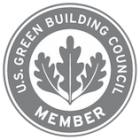Thermal energy storage cools LEED Platinum Galaxy Elementary

July 22, 2015
With their unique benefits now more known among parents and educators, green schools are being built with greater regularity from coast to coast. According to "Greening America's Schools: Costs and Benefits," a report sponsored by several organizations, including the American Federation of Teachers and the U.S. Green Building Council, green schools cost less than 2 percent more to build than traditional schools. The small bump in cost returns performance improvements including 33 percent less energy use and a 32 percent drop in water consumption. Saving resources allows schools to cut operating costs and greener environments have been shown to improve student performance.
One green institution that has reached the upper echelon of eco building is Galaxy Elementary School, a member of the School District of Palm Beach County in Boynton Beach, Florida. According to the Sun-Sentinel, the 109,000-square-foot campus opened in August 2013 and achieved Platinum status this year by earning 81 points from the U.S. Green Building Council.
In addition to being the first public or private school in Florida to earn Platinum recognition, Galaxy Elementary is noteworthy for its diverse use of green building strategies, which include the addition of a green roof, white reflective roof, waterless urinals, wind turbines, solar power, preferred parking for electric cars, a 4-acre natural habitat and an air conditioning system optimized by thermal energy storage. Attaining green certification was an amazing achievement, one that warrants further examination so as to shed light on what technologies and techniques could be adopted at schools elsewhere. Consider that more than 25% of all students attend schools that are substandard, 30% of kids get less than 15 minutes of fresh outdoor air per day with many schools cancelling recess completely and close to 70% of schools have building features such as air conditioning that are in need of extensive repair or replacement.
Green spaces make for better classrooms
Multiple studies have shown that good indoor air quality and green environments, including those that expose students to nature and reduce the presence of pollution, create a better experience for students. According to a study performed at Clark University, exposure to nature has shown to help boost a student's memory and focus levels. The Huffington Post reported that a recent study in Barcelona, Spain, of 2,500 primary school students showed similar results, with children that interact with green spaces experiencing improved memory and critical reasoning skills. Study results like these led Galaxy Elementary administrators to work with the local government in Boynton Beach and turn a parcel of land connected to the property into a combination park and research environment.
Affordable, cool and green
Of course, all the innovative building strategies for green schools come at a cost. The good news is that green schools can be created at the same or lower costs as conventional school buildings while simultaneously reducing strain on the environment. Some technologies, can even help recoup the school's investment, yielding returns for the life of the equipment. For example, Galaxy Elementary School was able to reduce operating costs by installing IceBank® energy storage, The Coastal Star reported.
The thermal energy storage tanks allow Galaxy Elementary to freeze water at night, then melt that ice during the day to cool the school. By doing so, the campus can take advantage of cleaner night-time energy and reduce their energy consumption throughout the day when electricity is most expensive. Shifting the school's energy consumption from the day to evening hours also helps to reduce demand on the power grid during the most congested periods. The load shift allows grid operators to more efficiently utilize power generated from renewables and reduce use of resource hungry peaker plants.
Ice storage in schools
Galaxy Elementary is one of a thousand schools to rely on thermal energy storage solutions to reduce its costs and its impact on the local environment. For example, Fossil Ridge High School in Fort Collins, Colorado, achieved LEED Silver status with the help of thermal storage technology. Likewise, the Alamo Heights Independent School District in San Antonio takes advantage of IceBank energy storage technology across five buildings on its high school campus, reducing peak energy consumption across the district by over 20 percent.
